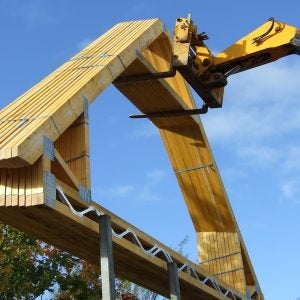Afforestation and reforestation are crucial to help meet the UK’s climate targets. In the UK forests currently hold 3.7 billion tonnes of carbon – estimated to be the equivalent of 10 years of UK's annual emissions.
But current afforestation in the UK is a fraction of what it was a few decades ago. The UK now only has 13% forest cover compared with almost 40% in continental Europe.
After years of declining tree-planting rates and with carbon accumulation falling as current UK woodlands mature, the rate of CO2 absorption is projected to plummet in the coming years. In 2020, the annual rate of CO2 accumulation was around 18 million tonnes, but this will decline to around 10 million by 2040.
The Conservative government led by Boris Johnson had pledged to plant 30,000ha (75,000 acres) of new woodland every year by 2024, but official statistics recently released show fewer than 14,000ha were planted in the year to March 31, 2022. Scotland planted three-quarters of the total with 10,480ha, with England planting 2,260ha, Wales 580ha and Northern Ireland 540ha.
“The UK government, devolved administrations and hundreds of local councils have declared an unequivocal climate emergency,” said Lord Duncan of Springbank, chair of Confor. “The UK forestry industry now has an unprecedented opportunity to take a leading role in helping the country reach its Net Zero ambitions. The challenges faced by government are not always straightforward but the informed decisions and urgent actions we take now will have a lasting impact for decades to come.”
Not all trees grow at the same rate or absorb CO2 in the same way. Faster-growing, coniferous tree species sequester carbon much more quickly in the early to medium term. And far more carbon is absorbed in mature conifers (40-50 years old) than in slower-growing broadleaf tree species at the same age. However, broadleaf species can accumulate more carbon reserves in the longer term – between 50 and 100 years.
The Committee for Climate Change recommends increasing woodland cover in the UK from 13% to between 17-19% by 2050 with a 60-40 split of broadleaf to conifers, to ensure the country achieves Net Zero. Such an increase equates to about 1.5 million ha of additional woodland.
However, due to the urgency for action, Confor has gone one stage further, calling for a 50-50 split between broadleaf and conifer planting. It estimates that if 18,000ha were planted every year starting this year, by 2030 these trees would sequester 2.04 MtCO2e, of which over 1.7 MtCO2e would be stored by conifers alone. Such an equitable species split would still deliver the benefits a more diversified mix of productive and broadleaf trees, including improving and protecting biodiversity and wildlife habitats.
“An essential part of limiting climate warming lies in significant carbon dioxide removals (CDR), not only as an adjunct to proactive emissions reduction, but as an essential part of its removal,” said Stuart Goodall, Confor chief executive. “But with many technology-based CDR solutions in their infancy, tree planting is currently the only scalable “negative emissions” strategy. And it comes with additional benefits for biodiversity, wildlife, flood management, health, not to mention considerable employment, production and trade opportunities.”
While forests act as a carbon store in the landscape, its product – timber – can also be a permanent store when used in construction and manufacturing. Carbon remains stored in wood products and these can often substitute for non-renewable construction materials such as concrete and steel. Recent research suggests that for every tonne of carbon sequestered in a new wood product, about 1 tonne of carbon is “saved” by avoiding the use of alternative materials.
In its report “Bigger, Better Forests” think tank, Policy Exchange, called for an overhaul of the UK’s forestry sector to drive the uptake of timber in construction. It states that, compared to masonry, concrete and steel, timber can reduce a building’s “embodied carbon” by between 20-60%.






